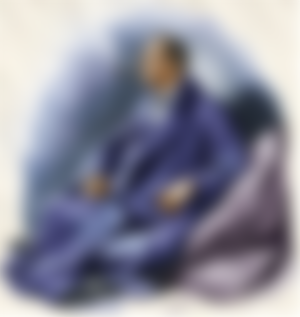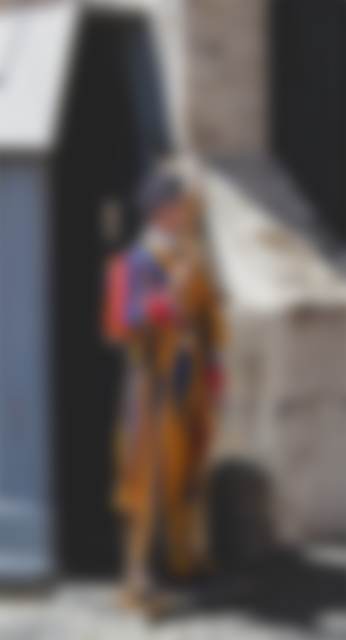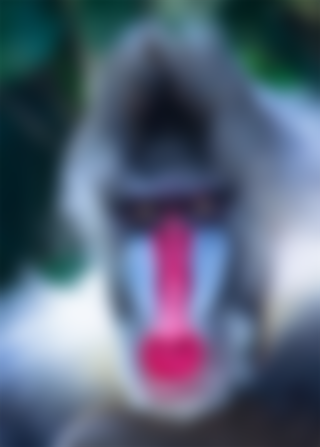Quizzes & Puzzles 42
Some new problems with which to exercise the brain. But first a look at answers and solutions to Quizzes & Puzzles 41. New problems below the image (cartoon).
Answer to Quiz 41:1
The world's smallest army was founded in 1506. It still exists, 110 men strong. Where do we find this army?
The is the Swiss Guard of the Vatican. To be enrolled to this small but prestigious army, you must be a Swiss male, 19-31 years old; you also must be single, a Catholic, have a solid reputation, and be 5-foot-3 tall or more. Furthermore, you must have completed Swiss army training.

The Renaissance-style uniforms of a Swiss Guard is easily recognisable. (Image by Rodrigo Pignatta/Pixabay, CC0/Public Domain.)
Answer to Quiz 41:2
Apart from eyes of some species, one hardly sees blue colour in mammals. There is one exception though – what?
I don't know if this question was misunderstood, I'm not talking about a completely blue mammal, but a blue coloured part of a mammal. Here we have it, a mandrill:

Blue occurs in the face of certain primates, most clearly in the mandrill. (Detail from Image by John Leong/Pixabay. CC0/PPublic Domain.)
Answer to Quiz 41:3
Who did receive the very first Nobel Prize in Physics?
Why was he awarded the prize?
It was Wilhelm Conrad Röntgen, who, in 1901 was awarded the first Nobel Prize in physics for his discovery and production of X-rays. Their practical use hardly needs any presentation, most of you have faced them in examination of broken bones, lungs, teeth etc.
Answer to Quiz 41:4
What is the name of the Hunchback of Notre Dame? And who wrote the book about him?
The name of the Hunchback is Quasimodo, and the original novel, published 1831, was written by French author Victor Hugo. The novel is an example of Gothic Romanticism. It was spectacularly successful and influenced subsequent literature – such as authors Balzac, Flaubert, Dickens and many others. Outside literature, it also resulted in an interest in Gothic architecture, not at least as represented by Notre Dame de Paris, which was renovated as a direct result of the interest that was triggered by the book.
“The Hunchback of Notre Dame” is a world classic and has been adapted to innumerable films, TV-films or series, radio dramas, theatre plays, ballets, comics, etc.
This is one film version: The Hunchback of Notre Dame, from 1997
Answer to Quiz 41:5
Why should you never ingest (eat or drink) anything sour that has been packed in aluminium (foil or can)?
Because acid dissolves minerals, so you would get aluminium in the sour foodstuff or beverage. It should be noted that ingestion of aluminium is very harmful. Among other things, it is a strong oxidant (causing oxidation) and it is also indicated as a contributory cause of Alzheimer's disease.
Answer to Quiz 41:6
This is an illustration for “The Man with the Twisted Lip”, a Sherlock Holmes story. The story was written by Sir Arthur Conan Doyle, but who made the classical illustrations (including the one displayed here) when the stories were first published? This illustrator created the appearance of Holmes, as we still think of him.

The answer is Sidney Paget. Let me quote from my article “The Faces of Sherlock Holmes” from Meriondho Leo 155, 2018 (not available online):
“Sherlock Holmes was not the very first detective of literature. However, he became archetypal, he became THE detective, and had an impact on subsequent literature and its various offspring in film and television as few other fictive individuals. His shadow rests over a whole genre, at that one which became dominant within as well literature as film and television during the 20th century.
While Sir Arthur Conan Doyle created Sherlock Holmes and wrote the original stories, the visual view of Holmes came to be created by Sidney Paget (1860-1908), who illustrated the original short stories when they were published in The Strand Magazine. Paget's influence on how we perceive the appearance of Sherlock Holmes cannot be overestimated. He remains the ultimate Holmes illustrator.”
If you want to see more of Sidney Paget's illustrations, take a look here:
https://www.arthur-conan-doyle.com/index.php/Sidney_Paget

And now some new exercises for brain & memory...
Quiz 42:1
Which king had a stinking chronic infection in his mouth too such a degree that it affected his court protocol (nobody was allowed to come close to the king)? At the time, this king was the most powerful monarch in Europe.
Quiz 42:2
What is “the Hammer of Witches”, or “Malleus Maleficarum”?
A weapon?
A book?
An object of worship?
Quiz 42:3
Mental health problem, colour, celebration, heavy metal,… to what am I referring?
If I should give you one more clue, it would be “music”.
Quiz 42:4
I have previously written about how not everything called nuts are nuts in a botanical sense, and analogous about berries; this time we will look at fruit. Cultural and botanical definitions sometimes differ; so, which of the following are fruits, in the botanical sense?
orange
tomato
cabbage
cucumber
kiwi
radish
bell pepper
blueberry
carrot
avocado
Quiz 42:5
Imsety, Qebehsenuef, Hapy, and Duamutef – who was their father?
Quiz 42:6
By which gland is the hormone thyroxine produced?
You'll find answers and solutions in the next “Quizzes & Puzzles”.
Quizzes & Puzzles has its own label in my Index, where all issues of the series can be found.
In my INDEX, you can find all my writings on Read.Cash, sorted by topic.
Copyright © 2022 Meleonymica/Mictorrani. All Rights Reserved
(Cartoon by Christian Dorn/Pixabay, CC0/Public Domain.)
(All the images are in the Public Domain.)



